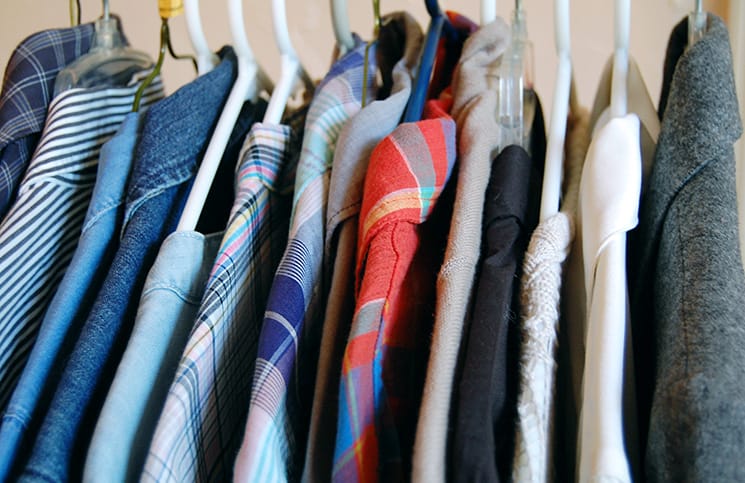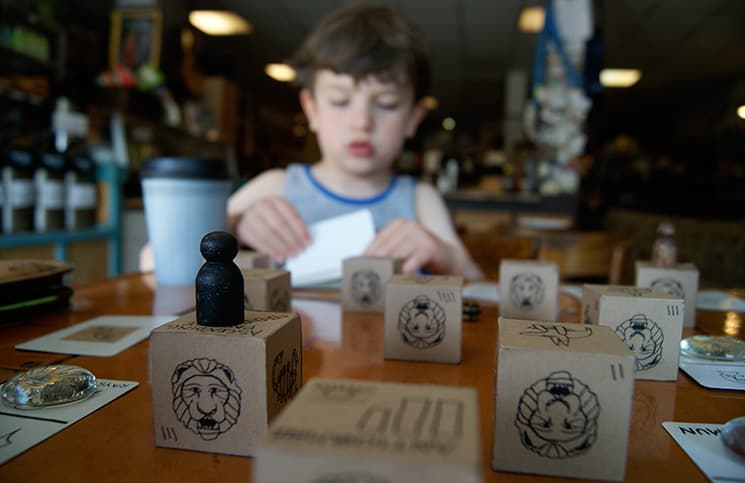Here’s the good news: there are more ways than ever before to learn how to do just about anything. There are hundreds of hours worth of YouTube videos and thousands of online guides to everything from fixing leaky faucets and reading music to jailbreaking your iPhone and deep-frying candy bars. Millions of pop-up ads promise to teach you “one weird trick” for losing weight, refinancing your mortgage, or becoming president.
But here’s the bad news: there are more ways than ever before to learn how to do just about anything. The choices are overwhelming and, often, the sources are dubious. Where does a curious person start?
The answer is surprisingly simple — start locally. On Saturday, Aug. 1, Portsmouth Public Library hosts its second annual How-To Festival. The event gathers experts from around the Seacoast to teach the basics of composting with worms, swing dancing, managing your money, reading poetry, and dozens of other topics.
In the spirit of learning locally, The Sound asked artists, writers, and other creative types from around the region to offer their own brief how-to guides on a variety of topics. — Larry Clow
How to write a song
by Guy Capecelatro III
Listen to what people say. Write things down. Empathize. Watch what the birds do. Call your grandmother and ask her how things used to be when she was a kid. Ask her what your father was like when he was 12, living in Ohio, shooting squirrels from the chestnut trees, skinning them and stringing them up by their tails to dry out in the early autumn air.
Remember Christmases and birthdays. Remember summer camp, the Berkshires, and swimming in that freezing, mountain-fed river. Your first kiss. Your first cigarette. Your first fist fight. Your first car crash.
Watch movies. Watch television. Obsess over scenes. Write it all down. Talk into your phone. Call your answering machine. Go out and see live music. Walk in the woods with words on your tongue. Walk with nothing in mind. Stop and breathe it all in.
Spy on people. Embellish. Lie outright. Invent stories about strangers on the subway; the woman in the business suit is a hitman, the guy with the silvered goatee her target. See the subtle way she watches him without ever looking at him and how she quietly hates what she has to do and simultaneously embraces it wholly and passionately.
Play your instrument. Play an instrument you don’t know how to play. Hear the rhythm in the rain, the whirling bus tires, the timbre of the wind whistling through the old, wavy glass as the days grow shorter and colder.
Flirt. Cheat. Steal. Drink. Get messed up on your mother’s muscle relaxants. Say inappropriate things just for the reaction. Create chaos needlessly. Take wrong roads. Linger. Imagine if you and Sarah hadn’t broken up; if she didn’t have the abortion. If she had said yes that night by the ocean with the stupid moon playing hide and seek behind the clouds.
Approach a song like it’s your job. As though you’re working a muscle. Wring your muse like a washcloth. Don’t go online. Don’t look at your goddamned phone. Skip meals. Don’t stop until you finish, even if it sucks, because when you’re done you can write another and it might be better.
— Singer-songwriter Guy Capecelatro III’s latest album is “Scatter the Remains.”
How to shop secondhand
by Kirsten Elfe
Secondhand boutiques are more popular than ever, and so is appreciation for gently worn garments. Consignment boutiques are great for curated items, but large chain thrift stores, like Goodwill and Savers, offer a wider variety of options at more modest prices. But how is a shopper to find them among the crowded bins and racks? Here are five tips to help you master the art of shopping in large secondhand stores.
Revamp: You’ve searched all the aisles and finally found a summer dress — only to discover it’s a foot longer than desired. The quickest way to modernize a garment is to change the hem. Similarly, slight alterations can enhance the fit and style of pants and skirts.
Deviate: Following the norm limits your thrift shopping experience. Branch out to other departments. Oversized flannels in the men’s department are a staple layer for any fall wardrobe. Schoolboy blazers in the teen department make for a well-fitted business casual option in the spring.
Uncover: Undergarments in chain thrift stores are largely overlooked for obvious reasons. However, hidden among undesirable lingerie and leotards you’ll find gems like Courtney Love-style slip dresses and 1940s brassieres. Face your fears and you may discover unique swimwear silhouettes not found in traditional clothing stores. All secondhand purchases should be washed right away, and these are no exception. But, after a good wash, all will be set right.
Plan: In the summer heat, it’s daunting to think that winter will soon be closing in, but thrift stores offer the ability to plan ahead. The best deals can be found on off-season clothing racks. Since the demand for parkas in August is low, take advantage of the wide selection. Off-season purchases become treasures in your closet and keep your wardrobe budget happy.
Relax: The key to large-scale thrift shopping is time. More often than not, the rewards match the effort. Take your time through the bins and forage the racks. Patience will yield profit.
— Kirsten Elfe is a Seacoast native and fashion student with special interest in sustainable style.
How to create a board game
by John Herman
An ancient trap seals you and a team of archeologists inside an unexplored tomb. You must uncover chambers, arrange hieroglyphs, collect amulets, and avoid the pharaoh’s four curses to break the seal and escape.
That’s the premise of a board game I invented with my 5-year-old son, Emrys. We have three working prototypes, countless play tests with people of all ages, and a pending submission for the developers showcase at the Boston Festival of Indie Games this fall at the Massachusetts Institute of Technology.
Are we game designers? I suppose we are.
If you want to design games, you have to play a lot of games. There are design patterns. Common game mechanics include resource management, tile placement, dice, bidding, or puzzle guessing. Some designers start with a mechanic and go from there. I start with the theme.
Enable your players to escape into a role. “Monopoly” may be about dice rolling, card collecting, and player elimination, but the theme is real-estate development. Give your players a fun theme and a clear path to success. Throw in some obstacles and you have a game.
It took me months to develop my first game. Emrys still pitches me changes to it. He’s quicker at design. He develops games in minutes. Recently, he made a game inspired b




